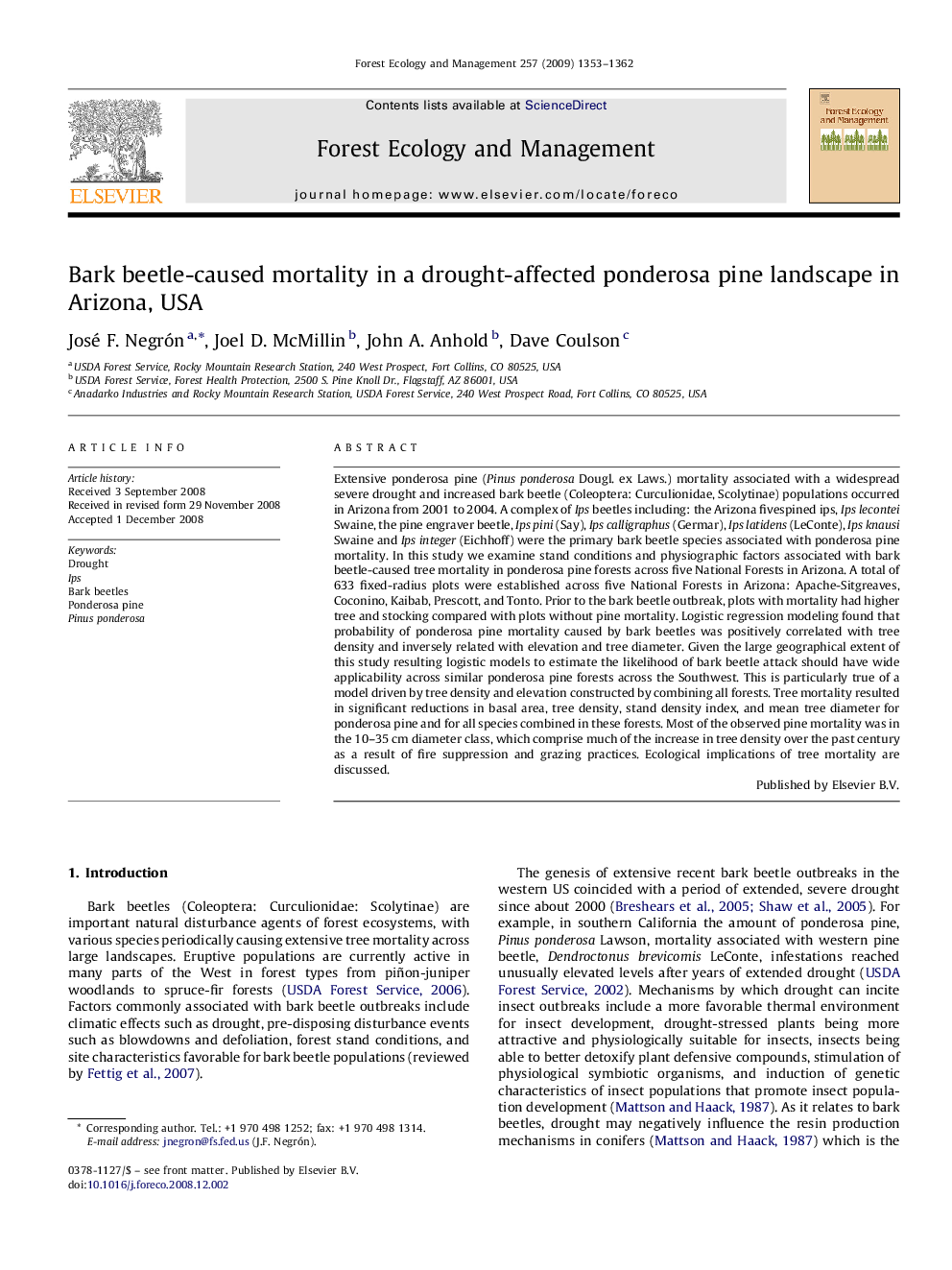| کد مقاله | کد نشریه | سال انتشار | مقاله انگلیسی | نسخه تمام متن |
|---|---|---|---|---|
| 88607 | 159310 | 2009 | 10 صفحه PDF | دانلود رایگان |

Extensive ponderosa pine (Pinus ponderosa Dougl. ex Laws.) mortality associated with a widespread severe drought and increased bark beetle (Coleoptera: Curculionidae, Scolytinae) populations occurred in Arizona from 2001 to 2004. A complex of Ips beetles including: the Arizona fivespined ips, Ips lecontei Swaine, the pine engraver beetle, Ips pini (Say), Ips calligraphus (Germar), Ips latidens (LeConte), Ips knausi Swaine and Ips integer (Eichhoff) were the primary bark beetle species associated with ponderosa pine mortality. In this study we examine stand conditions and physiographic factors associated with bark beetle-caused tree mortality in ponderosa pine forests across five National Forests in Arizona. A total of 633 fixed-radius plots were established across five National Forests in Arizona: Apache-Sitgreaves, Coconino, Kaibab, Prescott, and Tonto. Prior to the bark beetle outbreak, plots with mortality had higher tree and stocking compared with plots without pine mortality. Logistic regression modeling found that probability of ponderosa pine mortality caused by bark beetles was positively correlated with tree density and inversely related with elevation and tree diameter. Given the large geographical extent of this study resulting logistic models to estimate the likelihood of bark beetle attack should have wide applicability across similar ponderosa pine forests across the Southwest. This is particularly true of a model driven by tree density and elevation constructed by combining all forests. Tree mortality resulted in significant reductions in basal area, tree density, stand density index, and mean tree diameter for ponderosa pine and for all species combined in these forests. Most of the observed pine mortality was in the 10–35 cm diameter class, which comprise much of the increase in tree density over the past century as a result of fire suppression and grazing practices. Ecological implications of tree mortality are discussed.
Journal: Forest Ecology and Management - Volume 257, Issue 4, 20 February 2009, Pages 1353–1362